Nuclear tensions rising in South Asia
- Published
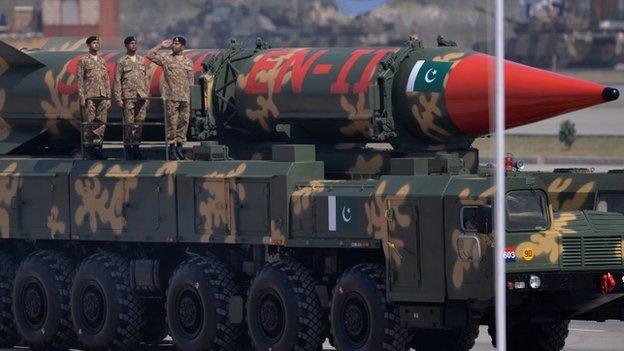
Pakistani military personnel stand beside Shaheen-II missiles during the Pakistan Day military parade on 23 March 2015; the country has reportedly test-fired the longer-range Shaheen-III weapons
The time, attention and effort devoted to reaching a deal with Iran over its nuclear ambitions has unwittingly tended to obscure the growing dangers of nuclear proliferation elsewhere in the world.
South Asia, a volatile and unstable region, has been witnessing an escalation in military and nuclear rivalry, somewhat overshadowed by the understandable fears of a nuclear arms race in the Middle East.
This part of the world, according to analysts, is fast becoming a race for nuclear supremacy between three powers - India, Pakistan and China (while technically not classified as South Asia, the country shares borders with both India and Pakistan). This rivalry in the eyes of many analysts is dangerous in itself but is made even more complex by the mutual suspicions and historical enmities that bedevil the region.
'Restraint and deterrence'
First, take Pakistan. The country is plagued by economic and political insecurity but is locked in a fight for military bragging rights with India. The country is believed to have one of the world's fastest growing nuclear arsenals. A recent report, external indicated that it had tripled the number of warheads it had a decade ago.
Nuclear strength is a political and military strategy in the eyes of the Pakistani governing class, a way of countering India's political and military clout. Pakistan has no official nuclear doctrine, but official communiques speak of "restraint" and "deterrence".
The Pakistan government recently approved the purchase of eight submarines from China, external. It is not clear from reports whether they have the capacity to be equipped with nuclear missiles. The deal, said to be worth billions, is one of China's biggest arms deals. It also threatens to intensify a growing battle for military supremacy in the Indian Ocean, a stretch of sea that has long been a source of rivalry and tensions in the region.
The reported deal sheds light on one other area of conflict and rivalry. China has long been one of Pakistan's main arms suppliers, accounting for half of Pakistani weapons imports, according to a report published by the Stockholm International Peace Research Institute.
Troubled history
China and Pakistan have been close for decades, based largely on their mutual suspicion of India.
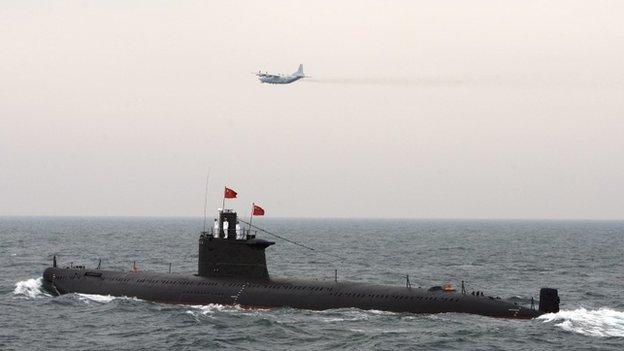
China is one of Pakistan's main suppliers of weapons
In other developments, the Pakistanis are reported to have test-fired a missile, external recently that appears capable of carrying a nuclear warhead. Pakistan possesses the medium-range Shaheen-III missile with a range of some 1,700 miles, leaving India easily within range. A recent leader article in the New York Times, external reported claims that Pakistan continues to develop short-range tactical nuclear weapons. Again, leaving India well within range.
No-one should underestimate the rivalry between the two countries, informed by their troubled history, which includes outright wars in 1947, 1965 and 1971.
India is estimated by analysts to have some 110 warheads but continues to expand its nuclear programme but at a slower pace, according to some reports. The country has a mixed strategy, combining short and long-range ballistic missiles, nuclear submarines and cruise missiles. It tested its first nuclear device in 1974.
India has a No First Use doctrine, recently confirmed by Prime Minister Narendra Modi. Security is a key part of India's nuclear strategy. China's nuclear strength is a worry to India, as is its more advanced strategic weapons and its numerically superior military force. Also a worry is the traditionally close relationship between China and Pakistan, India's erstwhile enemy.
Informed analysis estimates that China's nuclear weapons number some 250 warheads, external - a mixture of short, intermediate, and long-range ballistic missiles. China's ambitions encompass land, air and sea-based nuclear delivery systems.
China's nuclear ambitions took off in the 1950s, in the wake of the Korean War. Its first nuclear test is believed to have been conducted in 1964. It is a view among informed commentators that the country's nuclear capability will continue to grow in the coming years. China has always maintained that its own No First Use policy is defensive. The country is a signatory to the Non-Proliferation Treaty, the NPT. It is also a signatory to the Comprehensive Nuclear-Test-Ban Treaty (CTBT) but has yet to ratify it.
Lethal cocktail?
The fierce nuclear competition in South Asia is seen by many as a recipe for instability in a region already burdened with problems.

Narendra Modi recently confirmed India's No First Use doctrine
It is a potentially lethal addition to the cocktail of territorial disputes and cross-border terrorism. The capacity of other world powers to influence the situation is hampered by the fact that neither India nor Pakistan belong to the NPT.
Pakistan's economic and political instability also poses huge and troubling questions. The country is persistently challenged by militant groups and fears persist that these groups could get their hands on nuclear materials, despite strong insistence from Pakistani officials that its nuclear facilities are secure.
America and Russia still possess more than 90% of the world's nuclear weapons but South Asia, home to three nuclear states, remains a growing worry, perhaps one that will get more attention in the coming months.
- Published14 July 2015
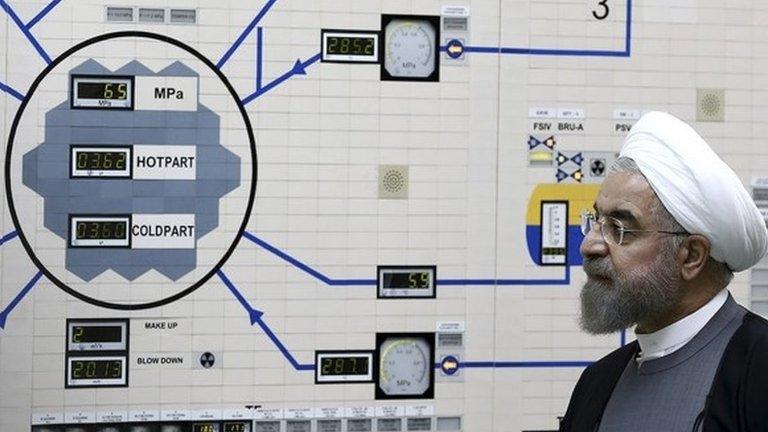
- Published3 April 2015
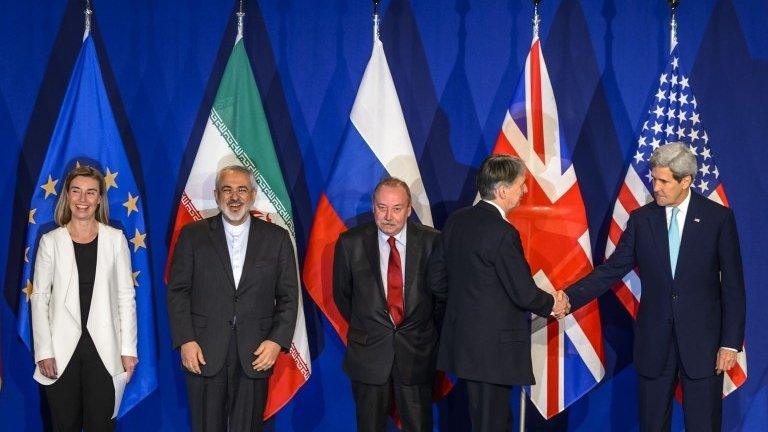
- Published15 March 2024

- Published10 March
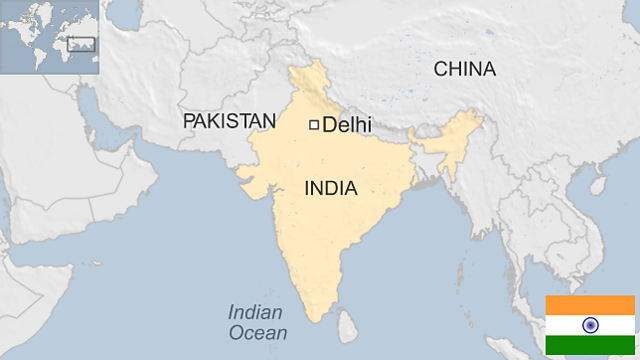
- Published25 August 2023

